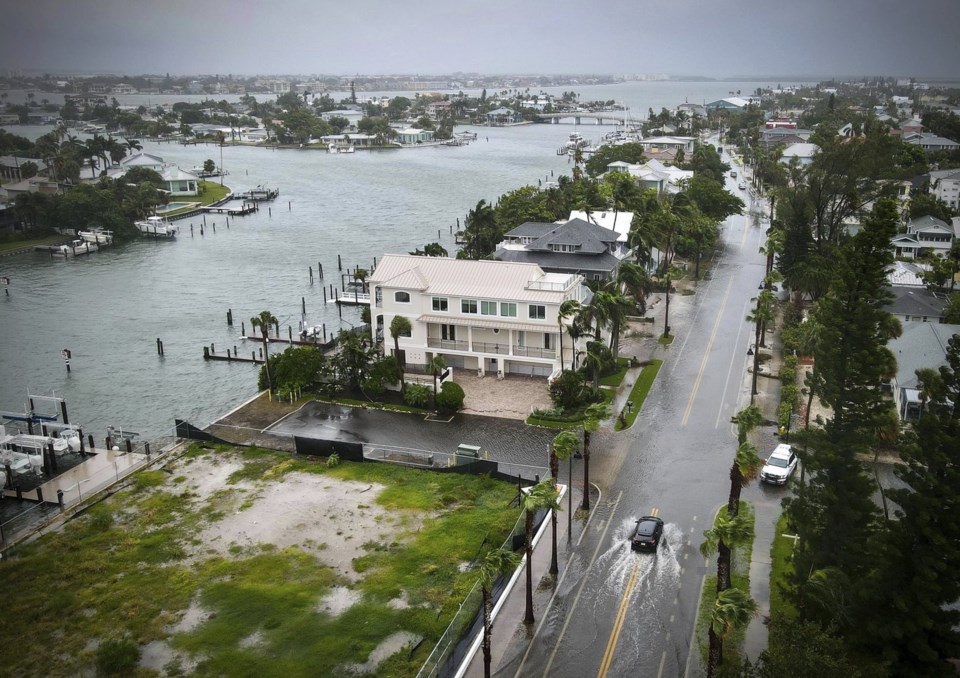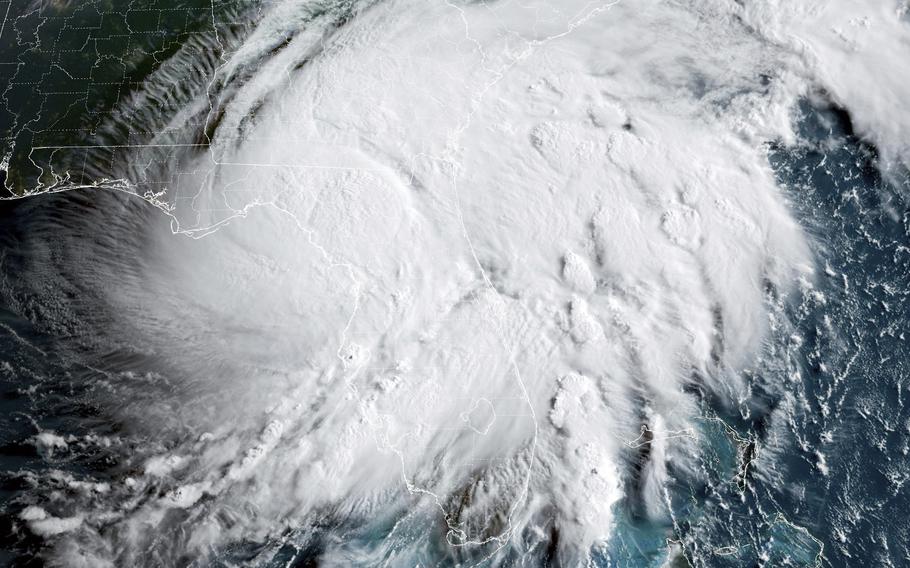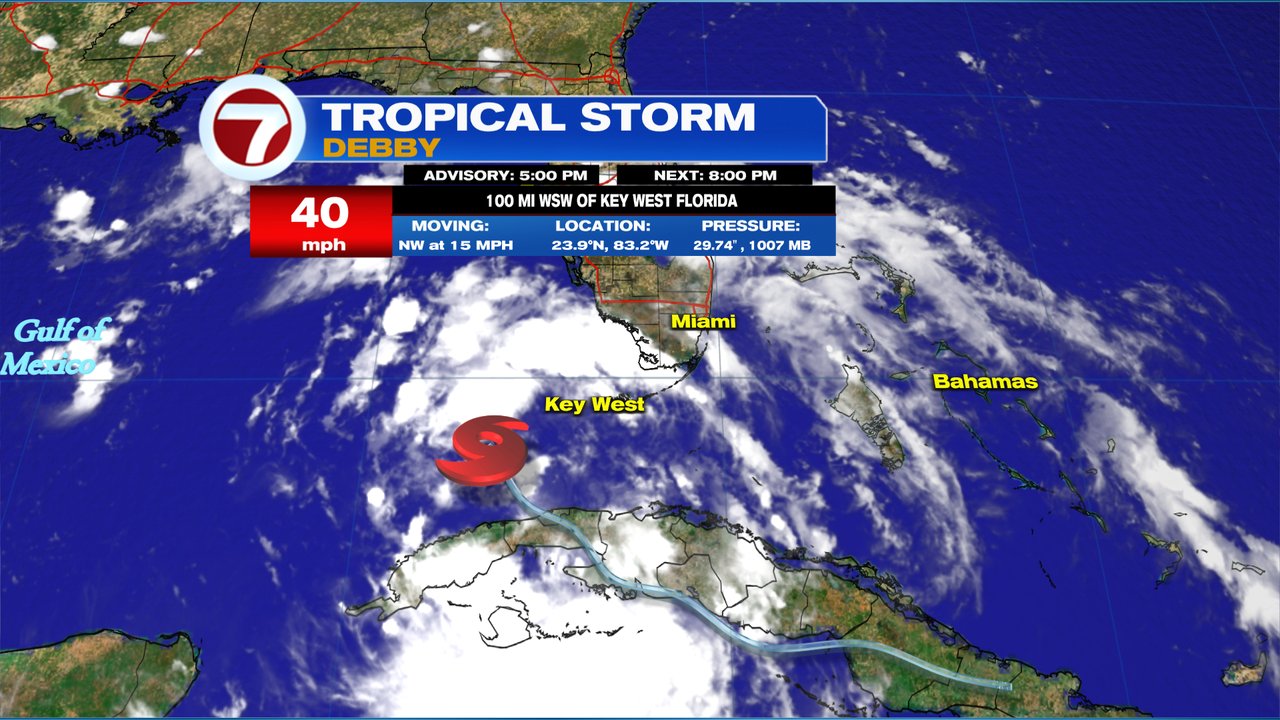Tropical Storm Debby’s Formation and Development: Tropical Storm Debby Hurricane

Tropical Storm Debby, a significant weather event that impacted the southeastern United States, originated in the warm waters of the Atlantic Ocean. The storm’s formation and development were influenced by a confluence of meteorological factors that created the perfect environment for its genesis and intensification.
Meteorological Conditions Leading to Formation
Tropical cyclones, like Debby, form over warm ocean waters, typically with temperatures exceeding 80 degrees Fahrenheit. This warm water provides the necessary energy to fuel the storm’s development. Debby’s formation was further facilitated by the presence of a pre-existing area of low pressure, known as a tropical wave, moving westward across the Atlantic. This wave, characterized by lower atmospheric pressure, created a region of convergence where air masses could rise and release latent heat, further intensifying the developing storm.
Impacts of Tropical Storm Debby

Tropical Storm Debby, though classified as a relatively weak storm, left a significant mark on various regions, causing widespread disruption and damage. The storm’s impact varied across different areas, affecting coastal communities, inland regions, and vital infrastructure.
Coastal Areas
The storm’s primary impact was felt along coastal areas, where strong winds, heavy rainfall, and storm surge caused significant damage. Coastal communities experienced severe flooding, with seawater inundating low-lying areas and damaging homes and businesses. Coastal erosion was also prevalent, with strong waves eroding beaches and altering the coastline.
Inland Communities
Inland communities were not spared from the effects of Tropical Storm Debby. The storm’s heavy rainfall resulted in widespread flooding, with rivers and streams overflowing their banks. This led to the inundation of homes, businesses, and agricultural land, causing significant economic losses.
Infrastructure
Tropical Storm Debby’s heavy rainfall and strong winds significantly impacted infrastructure. Power outages were widespread, affecting homes, businesses, and critical services. Transportation was also disrupted, with roads and bridges closed due to flooding and debris.
Property Damage
The storm caused significant property damage, with homes, businesses, and infrastructure suffering from flooding, wind damage, and debris. The extent of damage varied depending on the location and intensity of the storm’s impact.
Power Outages
Tropical Storm Debby’s strong winds and heavy rainfall led to widespread power outages. The storm damaged power lines and infrastructure, leaving thousands of homes and businesses without electricity.
Transportation Disruptions, Tropical storm debby hurricane
The storm’s heavy rainfall and flooding caused significant transportation disruptions. Roads and bridges were closed due to flooding and debris, making it difficult for people to travel and access essential services.
Flooding
Tropical Storm Debby’s heavy rainfall resulted in widespread flooding, with rivers and streams overflowing their banks. This led to the inundation of homes, businesses, and agricultural land, causing significant economic losses.
Human Life
Tropical Storm Debby caused injuries and fatalities, primarily due to flooding and debris. The storm also led to evacuations, with people forced to leave their homes due to the threat of flooding and other dangers.
Response and Recovery Efforts

Tropical Storm Debby’s impact demanded a swift and coordinated response from authorities, emergency services, and disaster relief organizations. The storm’s unpredictable nature and potential for widespread damage underscored the importance of preparedness and timely action.
Emergency Response Measures
The response to Tropical Storm Debby was characterized by proactive measures taken by authorities and emergency services to mitigate the storm’s effects. Prior to the storm’s landfall, evacuation orders were issued for vulnerable coastal areas, urging residents to seek higher ground and avoid potential flooding. Emergency shelters were opened, providing safe haven for those who could not evacuate.
The swift evacuation orders and the opening of emergency shelters were crucial in minimizing casualties during Tropical Storm Debby.
- Pre-Storm Preparations: Local governments, in collaboration with the National Weather Service, issued timely warnings and advisories, providing residents with crucial information about the storm’s projected path, intensity, and potential impacts. Emergency preparedness kits were encouraged, ensuring that residents had essential supplies such as food, water, batteries, and first-aid kits. This proactive approach helped to minimize the potential for panic and chaos during the storm’s arrival.
- During the Storm: Emergency response teams were on high alert, prepared to respond to emergencies such as power outages, flooding, and structural damage. Rescue teams were deployed to assist stranded individuals, and medical services were mobilized to provide care to those injured during the storm. The coordinated efforts of emergency responders ensured that timely assistance was provided to those in need.
- Post-Storm Response: After the storm had passed, authorities and emergency services shifted their focus to damage assessment, debris removal, and restoration of essential services. Road closures were addressed, and power crews worked tirelessly to restore electricity to affected areas. Search and rescue operations continued to locate individuals who may have been trapped or injured during the storm.
Disaster Relief Efforts
The aftermath of Tropical Storm Debby saw a significant influx of support from disaster relief organizations, both national and international. These organizations provided vital assistance to affected communities, offering resources, supplies, and expertise in the recovery process.
- Providing Shelter and Supplies: Disaster relief organizations established temporary shelters for displaced individuals, providing them with food, water, clothing, and other essential supplies. They also distributed hygiene kits, ensuring that basic needs were met in the wake of the storm’s destruction.
- Medical Aid and Psychological Support: Medical teams were deployed to provide medical care to those injured during the storm. Psychological support was also offered to help individuals cope with the trauma and stress associated with the disaster. These efforts aimed to address the immediate health needs of affected communities and promote their well-being during the recovery phase.
- Infrastructure Repairs and Debris Removal: Disaster relief organizations played a significant role in assisting with infrastructure repairs and debris removal. They provided resources and expertise to help communities rebuild damaged homes, businesses, and public infrastructure. This support helped to expedite the recovery process and restore normalcy to affected areas.
Recovery Efforts
The recovery efforts following Tropical Storm Debby were a testament to the resilience of affected communities and the dedication of individuals and organizations working together to rebuild. The process involved a multifaceted approach, addressing infrastructure repairs, debris removal, and community rebuilding.
- Infrastructure Repairs: The storm’s impact on infrastructure was significant, with widespread damage to roads, bridges, power lines, and water systems. Repairing these essential infrastructure elements was crucial to restoring basic services and enabling the recovery process. Government agencies and private contractors worked tirelessly to restore damaged infrastructure, ensuring the flow of transportation, electricity, and water.
- Debris Removal: The storm left behind a vast amount of debris, including fallen trees, damaged structures, and household items. Debris removal was a major challenge, requiring coordinated efforts from local governments, volunteer organizations, and private contractors. Efficient debris removal was essential to prevent the spread of disease, restore access to affected areas, and facilitate the rebuilding process.
- Community Rebuilding: The recovery process extended beyond infrastructure repairs and debris removal, encompassing the rebuilding of communities and the restoration of livelihoods. This involved providing financial assistance to homeowners and businesses, supporting economic recovery, and addressing the social and psychological needs of affected individuals. Community organizations, government agencies, and non-profit groups worked collaboratively to provide support, guidance, and resources to help communities rebuild and recover from the storm’s impact.
Effectiveness of Response and Recovery Efforts
The response and recovery efforts following Tropical Storm Debby were largely successful, demonstrating the effectiveness of coordinated action and community resilience. The proactive measures taken by authorities and emergency services minimized casualties and ensured timely assistance to those in need. The support provided by disaster relief organizations was instrumental in addressing immediate needs, providing resources, and facilitating the recovery process.
The effectiveness of the response and recovery efforts can be attributed to a combination of factors, including proactive planning, timely action, coordinated efforts, and community resilience.
- Successes: The response and recovery efforts were marked by several successes, including the timely issuance of warnings and evacuation orders, the effective operation of emergency shelters, the rapid deployment of rescue and medical teams, and the robust support provided by disaster relief organizations. These successes helped to mitigate the storm’s impact, minimize casualties, and facilitate a swift recovery.
- Challenges: Despite the successes, the response and recovery efforts faced challenges, including the scale of the damage, the disruption of essential services, and the psychological impact on affected individuals. Addressing these challenges required sustained efforts, ongoing support, and a commitment to rebuilding communities and restoring normalcy.
Tropical storm debby hurricane – Tropical Storm Debby was a real bummer for Florida, but hey, at least it gave us something to talk about besides the latest crypto craze. I’m still trying to wrap my head around Ripple XRP, though – it’s a whole different kind of storm.
If you’re curious about the tech behind it, check out this article: ripple xrp. Anyway, back to Debby – at least it didn’t hit us with a hurricane-force blow.
Tropical Storm Debby wasn’t messing around, bringing heavy rain and strong winds to the East Coast. It wasn’t just a regular storm either; it forced a complete shutdown of all NYC airports due to the intense weather conditions. You can read more about the impact of ground stops at NYC airports and how they affect operations.
Thankfully, Debby didn’t cause major damage, but it was a reminder that even seemingly minor storms can have a big impact on travel.
